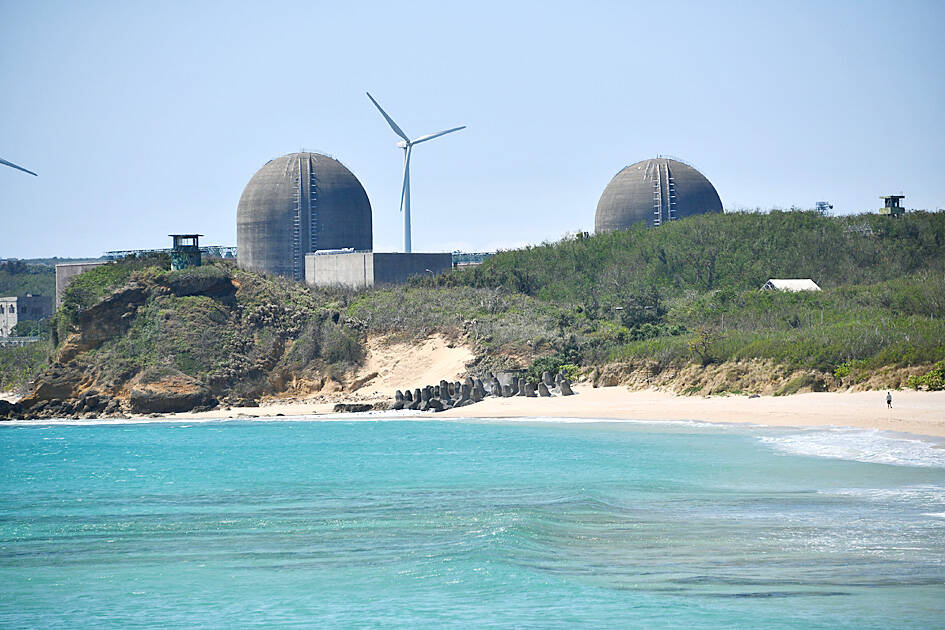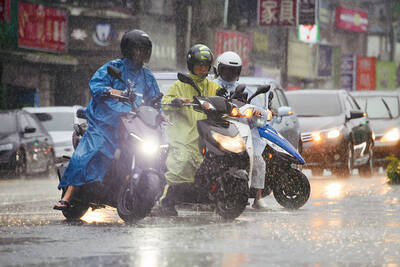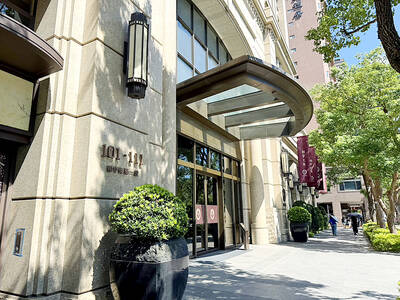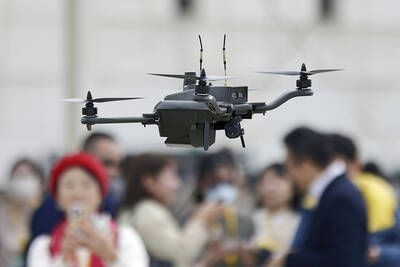Taiwan Power Co (Taipower, 台電) yesterday temporarily shut down the nation’s nuclear energy generation as the state-run utility started regular maintenance on the remaining reactor at the Ma-anshan Nuclear Power Plant for 41 days.
The No. 2 reactor of the nation’s only active nuclear plant in Pingtung County’s Hengchun Township (恆春) is set to be decommissioned next year. The No. 1 reactor has been offline since July.
The shutdown is to perform equipment maintenance and fuel replacement in preparation for the power plant’s next operating cycle, Taipower said in a statement.

Photo: Tsai Tsung-hsien, Taipei Times
With support from other energy sources, Taipower would ensure sufficient power supply during the 41-day period as it aims to maintain its operating reserve margin — or spare capacity at times of peak consumption — at 10 percent during the day and more than 7 percent at night, it said.
Taiwan is poised to become the first non-nuclear nation in East Asia after the No. 2 reactor closes down in May next year, although there is a continuing debate among ruling and opposition parties as well as within society about whether to extend the service life of the Ma-anshan plant amid fears about potential power shortages.
Nuclear power last year accounted for 6.31 percent of the nation’s energy use, which is dominated by coal at 42.24 percent and liquefied natural gas at 39.57 percent, while renewable energy only contributed about 9.47 percent and hydroelectricity 1.08 percent, Energy Administration data showed.
When the Democratic Progressive Party (DPP) took office in 2016, then-president Tsai Ing-wen (蔡英文) proposed a nuclear-free homeland policy by next year, setting a target energy mix of 50 percent natural gas, 30 percent coal and 20 percent renewable energy, but President William Lai (賴清德) is facing greater pressure to review the structure of the energy mix as public worries about the dangers of nuclear energy have been replaced by a fear of power shortages.
It comes as Taiwan’s power consumption is forecast to grow by an average of 2.8 percent per year through 2033, driven mainly by the ever-growing energy use in the artificial intelligence (AI) sector, and as the government aims to achieve net zero carbon emissions by 2050 to help combat climate change.
In an interview with Bloomberg News, Premier Cho Jung-tai (卓榮泰) said Taiwan is “very open” to using new nuclear technology to meet surging demand from chipmakers and the AI industry — one of the strongest signs yet that the DPP government is rethinking its opposition to nuclear energy.
“As long as there is a consensus within Taiwan on nuclear safety, and a good direction and guarantees for handling nuclear waste, with this strong consensus we can have a public discussion,” Cho said on Thursday last week.
“We hope that Taiwan can also catch up with global trends and new nuclear technologies,” the premier said, adding that he has asked Taipower to make sure that personnel related to the decommissioned reactors stay in their jobs.
“This is because we need to prepare for future nuclear technology developments and to respond to any potential legal changes in Taiwan,” Cho said.
Additional reporting by Bloomberg

The combined effect of the monsoon, the outer rim of Typhoon Fengshen and a low-pressure system is expected to bring significant rainfall this week to various parts of the nation, the Central Weather Administration (CWA) said. The heaviest rain is expected to occur today and tomorrow, with torrential rain expected in Keelung’s north coast, Yilan and the mountainous regions of Taipei and New Taipei City, the CWA said. Rivers could rise rapidly, and residents should stay away from riverbanks and avoid going to the mountains or engaging in water activities, it said. Scattered showers are expected today in central and

COOPERATION: Taiwan is aligning closely with US strategic objectives on various matters, including China’s rare earths restrictions, the Ministry of Foreign Affairs said Taiwan could deal with China’s tightened export controls on rare earth metals by turning to “urban mining,” a researcher said yesterday. Rare earth metals, which are used in semiconductors and other electronic components, could be recovered from industrial or electronic waste to reduce reliance on imports, National Cheng Kung University Department of Resources Engineering professor Lee Cheng-han (李政翰) said. Despite their name, rare earth elements are not actually rare — their abundance in the Earth’s crust is relatively high, but they are dispersed, making extraction and refining energy-intensive and environmentally damaging, he said, adding that many countries have opted to

FORCED LABOR: A US court listed three Taiwanese and nine firms based in Taiwan in its indictment, with eight of the companies registered at the same address Nine companies registered in Taiwan, as well as three Taiwanese, on Tuesday were named by the US Department of the Treasury’s Office of Foreign Assets Control (OFAC) as Specially Designated Nationals (SDNs) as a result of a US federal court indictment. The indictment unsealed at the federal court in Brooklyn, New York, said that Chen Zhi (陳志), a dual Cambodian-British national, is being indicted for fraud conspiracy, money laundering and overseeing Prince Holding Group’s forced-labor scam camps in Cambodia. At its peak, the company allegedly made US$30 million per day, court documents showed. The US government has seized Chen’s noncustodial wallet, which contains

SUPPLY CHAIN: Taiwan’s advantages in the drone industry include rapid production capacity that is independent of Chinese-made parts, the economic ministry said The Executive Yuan yesterday approved plans to invest NT$44.2 billion (US$1.44 billion) into domestic production of uncrewed aerial vehicles over the next six years, bringing Taiwan’s output value to more than NT$40 billion by 2030 and making the nation Asia’s democratic hub for the drone supply chain. The proposed budget has NT$33.8 billion in new allocations and NT$10.43 billion in existing funds, the Ministry of Economic Affairs said. Under the new development program, the public sector would purchase nearly 100,000 drones, of which 50,898 would be for civil and government use, while 48,750 would be for national defense, it said. The Ministry of